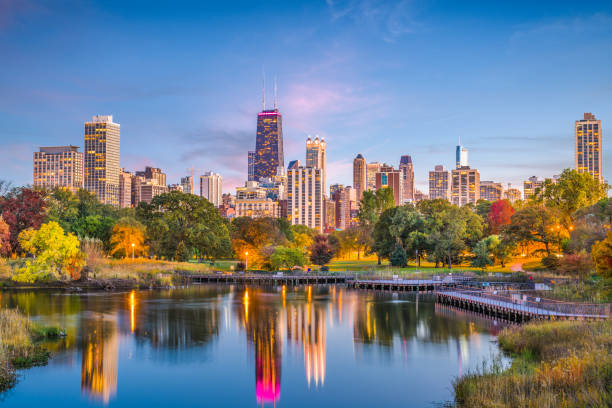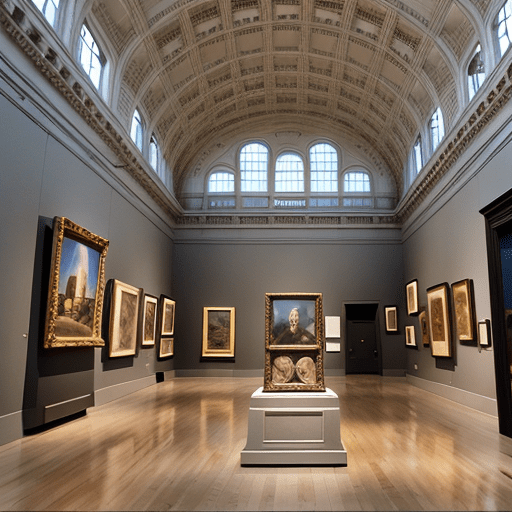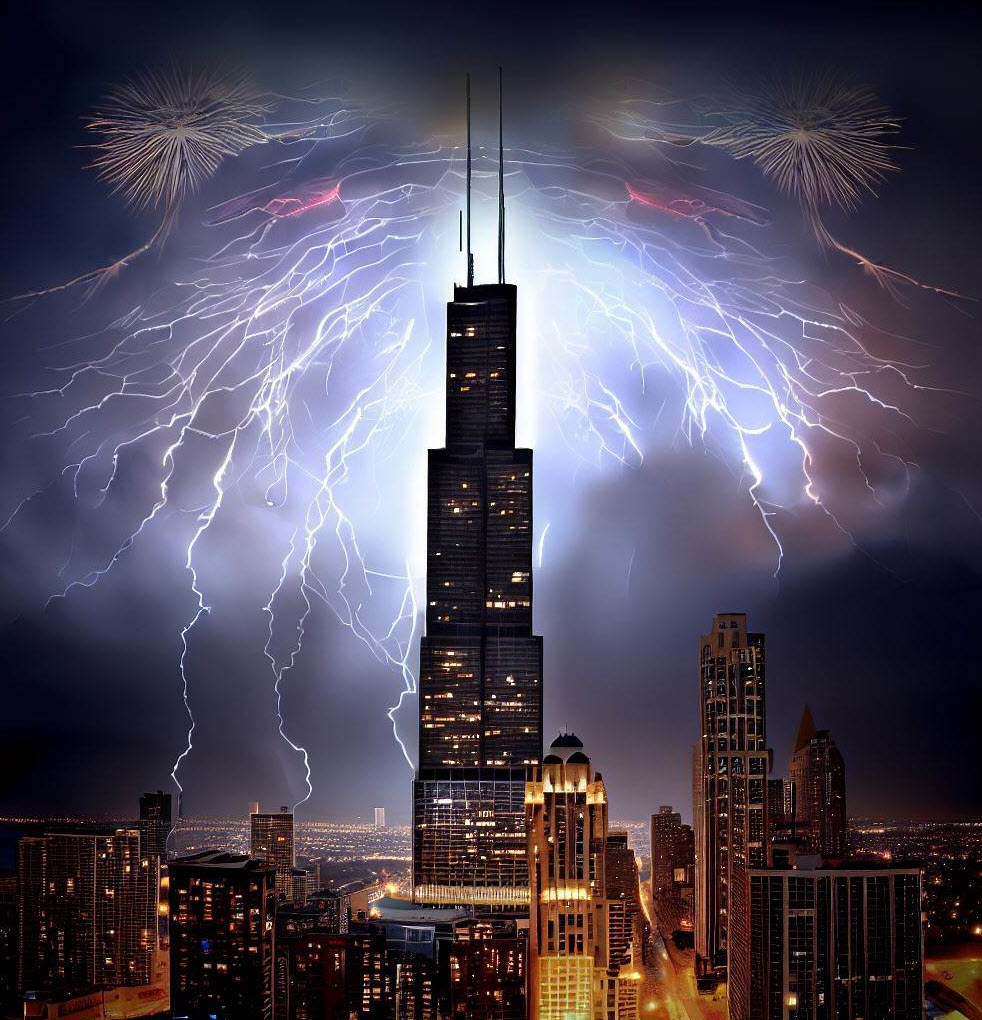
Discovering the Heart of the Windy City: Uncovering the Rich History of Chicago
Chicago is one of the most iconic cities in the United States, known for its impressive architecture, world-class museums, and vibrant cultural scene. But what many visitors may not know is that the city has a rich and fascinating history that spans more than two centuries. From its humble beginnings as a small trading post to its transformation into a major urban center, Chicago has played a pivotal role in shaping the cultural, social, and economic landscape of the country. In this article, we will explore the history of Chicago, from its early years to the present day, and discover what makes this city such a unique and fascinating place to visit.
When was Chicago founded? – A brief history of the city’s early years
The history of Chicago dates back to the late 1600s when French explorers first set foot in the area. The name “Chicago” is derived from the Native American word “shikaakwa,” which means “wild onion” or “skunk.” In the early years, the region was inhabited by several Native American tribes, including the Miami, Potawatomi, and Sauk.
The city was officially founded in 1833, when a group of settlers arrived at the mouth of the Chicago River and established a trading post. At the time, Chicago was a small and relatively unknown settlement, with a population of just a few hundred people. However, its location near Lake Michigan and the Mississippi River made it an important hub for transportation and trade.
Chicago in the 1800s – The city’s transformation into a major urban center
The 1800s were a period of rapid growth and development for Chicago. As the city’s population grew, so did its industries, including meatpacking, steel production, and manufacturing. In 1855, the world’s first skyscraper, the Home Insurance Building, was built in Chicago, ushering in a new era of architectural innovation.
However, the city was not without its challenges. In 1871, the Great Chicago Fire destroyed much of the city, including its business district and residential neighborhoods. Despite the devastation, the city quickly recovered and began rebuilding, with many of its buildings and streets redesigned to be more fire-resistant.
Chicago in the 1900s – The city’s growth and changes in the early 20th century
The early 1900s were a time of great change and progress for Chicago. The city continued to grow and expand, with new neighborhoods and suburbs springing up to accommodate its growing population. The World’s Columbian Exposition, held in Chicago in 1893, brought millions of visitors to the city and showcased its cultural and technological achievements.
However, the 1900s were also a time of social and political upheaval. Chicago played an important role in the labor movement, with workers organizing and striking for better wages and working conditions. The city’s notorious meatpacking industry was the subject of Upton Sinclair’s famous novel “The Jungle,” which exposed the unsanitary and dangerous conditions in the industry.
Chicago in the 1920s – The city during the Prohibition era and the rise of organized crime
The 1920s were a time of great change and excitement in Chicago, as the city experienced a cultural and social revolution. However, it was also a time of great upheaval, as the country entered a period of Prohibition and organized crime began to flourish.
Chicago became a hub for illegal activities such as bootlegging, gambling, and prostitution, and notorious gangsters such as Al Capone rose to power. Despite the efforts of law enforcement, organized crime continued to thrive in Chicago throughout the 1920s and 1930s, leaving its mark on the city’s history.
Chicago’s original name and its meaning
As mentioned earlier, the name “Chicago” is derived from the Native American word “shikaakwa,” which means “wild onion” or “skunk.” This name was given to the area by the Potawatomi tribe, who were the original inhabitants of the region.
The name “Chicago” was officially adopted by the city when it was founded in 1833, and it has been synonymous with the city ever since. Today, the city’s name is recognized around the world as a symbol of innovation, progress, and cultural diversity.
Early society in Chicago – A look at the city’s diverse communities and cultures
From its earliest days, Chicago has been a melting pot of cultures and communities. In the 1800s, immigrants from Europe and Asia flocked to the city, seeking a better life and new opportunities. The city’s African American population also grew, with many former slaves and their descendants settling in Chicago during the Great Migration.
Today, Chicago is one of the most diverse cities in the United States, with a rich and vibrant cultural scene. Visitors can explore neighborhoods such as Chinatown, Little Italy, and Greektown, and experience the unique cuisines, traditions, and customs of each community.
Key events in the history of Chicago – The Great Chicago Fire, World’s Columbian Exposition, and more
Throughout its history, Chicago has been the site of many important events and milestones. Some of the most notable include:
- The Great Chicago Fire of 1871, which destroyed much of the city but also led to new innovations in firefighting and urban planning.
- The World’s Columbian Exposition of 1893, which showcased the city’s cultural and technological achievements and drew millions of visitors from around the world.
- The Haymarket Riot of 1886, which sparked the labor movement and led to the creation of May Day as an international workers’ holiday.
- The 1968 Democratic National Convention, which was marred by protests and clashes between police and demonstrators.
Places to visit in Chicago to learn about its history – Museums, landmarks, and other attractions
There are many places in Chicago where visitors can learn about the city’s rich and fascinating history. Some of the most popular include:
- The Chicago History Museum, which features exhibits and artifacts that showcase the city’s past and present.
- The Art Institute of Chicago, which houses a collection of world-renowned art and artifacts from around the world.
- The Field Museum, which is home to a vast collection of natural history exhibits and artifacts, including the world-famous T-Rex skeleton “Sue.”
- The Willis Tower (formerly known as the Sears Tower), which offers breathtaking views of the city and its skyline.
- Millennium Park, which is home to many public artworks and sculptures, including the iconic Cloud Gate sculpture (also known as “the Bean”).
Reflections on Chicago’s rich history and what makes it a unique and fascinating city
In conclusion, Chicago is a city with a rich and fascinating history that spans more than two centuries. From its early days as a small trading post to its transformation into a major urban center, Chicago has played a pivotal role in shaping the cultural, social, and economic landscape of the United States.
Today, the city is known for its impressive architecture, world-class museums, and vibrant cultural scene. But what truly makes Chicago unique and fascinating is its diversity and resilience. Despite facing many challenges and setbacks throughout its history, Chicago has always bounced back and continued to thrive, making it a city that is truly worth exploring and discovering for oneself.
So next time you’re in the Windy City, take some time to explore its rich history and discover the heart of this amazing city.

